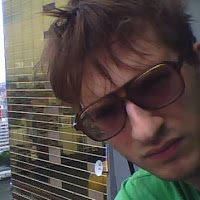Spring 2024
Jonathan Snipes
Jonathan Snipes is a composer and sound designer for Film and Theater living in Los Angeles. He teaches sound design in the theater and film departments at UCLA, and is a member of the rap group clipping. Jonathan will talk about his practice and show breakdowns of a few projects. Topics to include Field Recording, Film Composition, Sound Design, Beatmaking, Modular Synthesizers.

Spring 2022
Ellen Fullman
Ellen Fullman has been developing the Long String Instrument, an installation of dozens of wires fifty feet or more in length since the early 1980s. This project encompasses the study of Just Intonation tuning theory, a compositional practice centered on string harmonics, the development of a tablature graphic notation system, and musical instrument design and fabrication. The enveloping nature of the rich acoustic tones produced by The Long String Instrument evokes a sensation of being inside of a musical instrument. For more info go to: ellenfullman.com.
Awards include: The Gerbode Foundation Special Award in the Arts, Guggenheim Fellowship, Music Composition; Foundation for Contemporary Arts “Grants to Artists” Award; DAAD “Artists-In-Berlin Program” residency; and Japan-US Friendship Commission/NEA “Creative Artist Exchange Fellowship for Japan”. Her recordings include: Harbors (Room40 2020) a collaboration with Theresa Wong, and The Long String Instrument (Superior Viaduct, 2015) first issued on Apollo Records in 1985 and selected as the number one reissue for 2015 by the Wire. Fullman’s work was cited by Alvin Lucier in his book Music 109: Notes on Experimental Music (Wesleyan University Press, 2012).
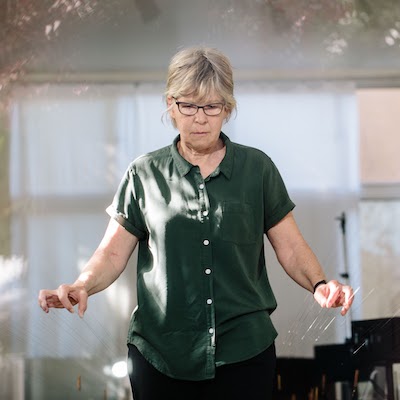
Bob Bellerue
Bob Bellerue is a sound artist, experimental musician, sound/video curator, and creative technician based in Ridgewood NY. Over the last 30+ years he has been involved in creating and presenting a wide range of sonic activities – experimental music, sound art, noise, junk metal percussion ensembles, soundtracks for dance/ theater/ video/ performance art, and sound / video installations. Bob’s electronic sound work is focused on resonant feedback systems, using amplified instruments, objects, recordings, and spaces, in combination with electronics and software written in the Supercollider audio synthesis programming language.
Bob’s work has been presented by The Kitchen, Issue Project Room, MOMA/PS1, Pioneerworks, Experimental Intermedia, Cafe Oto, Fylkingen, EMS, High Zero Festival, the Yogyakarta Gamelan Festival, Centre de Cultura Contemporanea de Barcelona, LUFF Festival, Akouphene Festival, Sonic Circuits Festival, Living Arts of Tulsa’s New Genre Festival, CEAIT Festival, Ende Tymes Festival, Denver Noise Festival, Olympia Experimental Music Festival, PDX Noise Festival, Cave12, Diapason Sound Gallery, Roulette, Boulder Museum of Contemporary Art, Elastic Arts, Here Art Center, Radio Epsilonia (Paris), WFMU, WKCR, WNYU, KFJC, KXLU, East Village Radio, Oberlin College, NYU, the Art Institute of Chicago, Stanford University, The New School, UCSD, and UCLA.
Bob’s discography includes dozens of releases on Elevator Bath Records, iDeal Recordings, Banned Productions, Fabrica, P-Tapes, RRR Records, Love Earth Music, Prison Tatt Records, Los Discos Enfantasmes, Zelphabet, Peyote Tapes, No Rent Records, Important Records, and his own Anarchymoon Recordings and Sleepy Hollow Editions.
Bob has curated and produced events for the Che Cafe (1987-91), Naropa Institute (1992-95), Highways Performance Space (1999-2001), Beyond Baroque (2001-5), CalArts (2001-3), Il Corral (2005-7), Porhouse (2007-8), The Kitchen (2008-11), Issue Project Room (2011-present), Silent Barn (2011-18), Secret Project Robot (2012-19), Knockdown Center (2014-15), MOMA (2015-16), H0l0 (2016-present), and Pioneerworks (2017-present). His festival Ende Tymes was founded in 2011, and the 11th iteration is presently delayed due to the coronavirus.
Bob works as an audio engineer and technical director, working presently for Issue Project Room, and a handful of clients in the NYC area
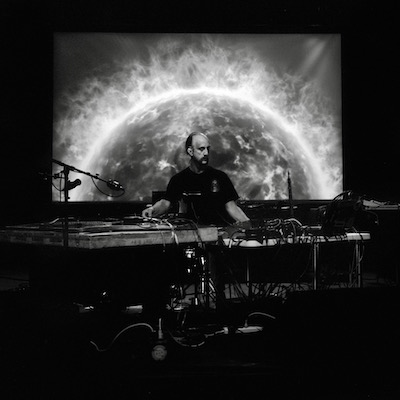
Mike Winter
I am a composer and sound artist whose work ranges from music created for digital and acoustic instruments to installations and kinetic sculptures. Each piece typically explores one simple process and often reflects various related interests of mine such as phenomenology, mathematics, epistemology, and algorithmic information theory. My work has been presented at venues and festivals throughout the world such as REDCAT, in Los Angeles; the Ostrava Festival of New Music in the Czech Republic; Tsonami Arte Sonoro Festival in Valparaiso, Chile; the Huddersfield New Music Festival in the United Kingdom; and Umbral Sesiones at the Museo de Arte Contemporáneo in Oaxaca, Mexico. Recordings of my music have been released by XI Records, Another Timbre, New World Records, Edition Wandelweiser, Bahn Mi Verlag, Tsonami Records, and Pogus Productions. In 2008, I co-founded the wulf., a Los Angeles-based organization dedicated to experimental performance and art. From 2018 to 2019, I was an artist-in-residence at the Akademie Schloss Solitude in Stuttgart, Germany. I am currently a research scholar at the Max Planck Institute for the History of Science in Berlin, Germany.
I have lectured and published extensively on algorithmic and computer-generated music; the connections between music, mathematics, communication theory, and epistemology; art and alternative communities and economies; and musicological investigations about the work of my mentors and contemporaries. My recent philosophical treatise “Meta+Phenomenology: Primer towards a Phenomenology Formally Based on Algorithmic Information Theory and Metabiology” was published in “Unravelling Complexity”, a book on complexity, philosophy, mathematics, and information theory in honor of the work of renowned mathematician Gregory Chaitin. I am currently extending this phenomenology with Brazilian mathematician Felipe Abrahão. By studying experience and subjectivity through algorithmic information theory, we are proving mathematical conjectures that uncover foundational aspects and limits of the emergence of complexity, consensus, echo chamber effect, niche construction, innovation triggering, and the constitution of status quo. The results can be used to understand how Big Data and the algorithmization of social, political, and economical relationships function within the context of the current and future digitally intermediated society.
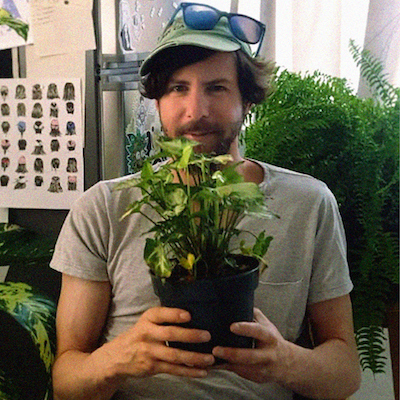
Lewis Keller
Lewis Keller is a performer, composer, engineer, artist and educator. He builds drumming robots, creates sound installations, designs experimental animation systems and builds his own noise synths as well as touring the world as a pop/rock musician and gigging locally playing jazz and indy musics. He’s been heard on numerous TV shows playing bass and drums at the same time and not heard in many small DIY spaces making all sorts of noises. His work often combines sophisticated technology with crude humble structures, inviting listeners to question their relationships with time, technology, space, sound and silence.
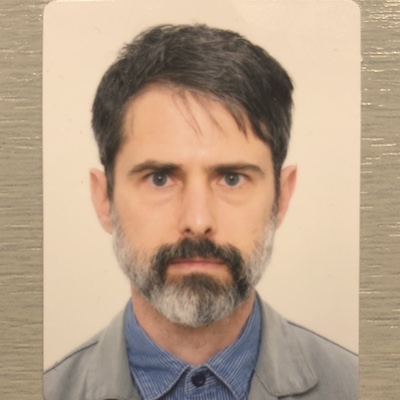
Gabby Fluke-Mogul
Gabby Fluke-Mogul is a New York based violinist, improviser, composer, & educator. fluke-mogul exists within the threads of improvisation, the jazz continuum, noise, & experimental music. Their playing has been described as “embodied, visceral, & virtuosic” & “the most striking sound in improvised music in years…” gabby is humbled to have collaborated with Nava Dunkelman, Joanna Mattrey, Fred Frith, Daniel Carter, Ava Mendoza, Jessica Pavone, Luke Stewart, Zeena Parkins, & Pauline Oliveros among many other musicians, poets, dancers, & visual artists. gfm holds a MFA in Music Performance & Literature from Mills College, a BA in Music & Early Childhood Education from Hampshire College, & a Deep Listening certificate from The Center for Deep Listening at Rensselaer.
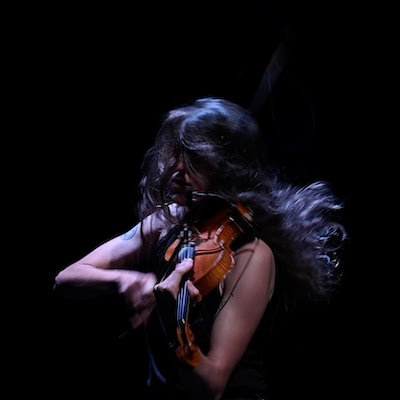
Corey Fogel
Corey Fogel (b. 1977) is a drummer and artist living in Los Angeles, CA. His practice is based in momentary encounters between music and objects, textiles, foods, and other collaborators. Fogel engages the viewer to consider sound as a medium on par with paint and cellulose, a constant in our daily lives. He challenges us to consider the contexts in which we create, store, and understand music performance.
Fogel’s works have been presented at Machine Project, Los Angeles; Los Angeles County Museum of Art, Human Resources, Los Angeles; Redling Fine Art, Los Angeles; The Wulf, Los Angeles; The Hammer Museum, Los Angeles; the Museo de Arte Contemporaneo de Oaxaca, REDCAT; Los Angeles; and New Music for Strings Festival: Reykjavik. His performance work was also included in J. Paul Getty Museum’s Pacific Standard Time Performance and Public Art Festival and West of Rome’s Trespass Parade. Corey was awarded The California Community Foundation 2014 Fellowship in Visual Arts.
Fogel also performs and composes in many rock, jazz, noise, folk, and chamber music capacities. Recent collaborations include: Julia Holter, Tashi Wada, Patty Waters, Abigail Levine, Simone Forti, Raven Chacon, Yoshi Wada, Michael Winter, Robert Blatt, Maya Dunietz, John Butcher, John Russell, Todd Barton, Misha Marks, Brian Allen, Alexander Bruck, Patrick Shiroishi, Haley Fohr, Liz Glynn, Chris Speed, Mark Dresser, Kathleen Kim, Ezra Buchla, Tony Malaby, Devin Hoff, John Dieterich, Carlin Wing, Sam Mickens.
Corey is currently working on his PhD in UC Irvine’s Integrated Composition, Improvisation, and Technology (ICIT) program
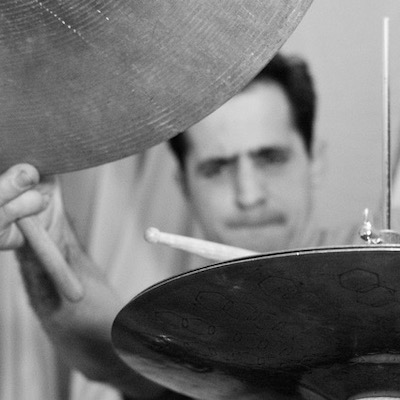
Franck Vigroux
French musician/composer Franck Vigroux is a multifaceted artist whose works range from electro-acoustic and experimental electronic music to modern composition, improvisation, radio works, avant rock, and beyond.
Primarily known as a guitar player, he also manipulates electronics and turntables, and has composed works for contemporary classical ensembles.
He is equally prolific as a solo artist and as a collaborator, and has worked with Elliott Sharp, Zeena Parkins, Mika Vainio, Reinhold Friedl (Zeitkratzer), and numerous others. Franck Vigroux ‘s music is made of tectonic tensions, beats, electronic textures and a very personal approach to sonic exploration. Vigroux’s uniqueness comes from his artistic approach that integrates new media and performing arts. He designs transdisciplinary shows and audiovisual concerts, collaborating with visual artists such as Antoine Schmitt and Kurt d’Haeseleer.
Vigroux’s records have been published on such as DAC Records, Leaf, Cosmo Rhythmatic, Monotype, Radio France, Erototox, Aesthetical.
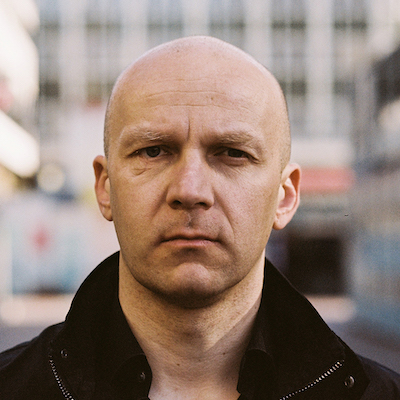
Spring 2021
Tim Perkis
Tim Perkis has been working in the medium of live electronic and computer sound for many years, performing, exhibiting installation works and recording in North America,Europe and Japan. His work has largely been concerned with exploring the emergence of life-like properties in complex systems of interaction.
In addition, he is a well known performer in the world of improvised music, having performed on his electronic improvisation instruments with hundreds of artists and groups, including Chris Brown, John Butcher, Eugene Chadbourne, Fred Frith, Gianni Gebbia, Frank Gratkowski, Luc Houtkamp, Yoshi Ichiraku, Matt Ingalls, Joelle Leandre, Gino Robair, ROVA saxophone quartet, Elliott Sharp, Leo Wadada Smith and John Zorn. Ongoing groups he has founded or played in include the League of Automatic Music Composers and the Hub — pioneering live computer network bands — and Rotodoti, the Natto Quartet, Fuzzybunny, All Tomorrow’s Zombies and Wobbly/Perkis/Antimatter.
He has taught at the California Institute of the Arts (CalArts) and the California College of the Arts (CCA); has been composer-in-residence at Mills College in Oakland California, artist-in-residence at Xerox Corporation’s Palo Alto Research Center, and designed musical tools and toys at Paul Allen’s legendary thinktank, Interval Research. In 2013 he was a resident fellow at the Mediterranean Institute of Advanced Research (IMéRA) of the University of Aix-Marseille in France.
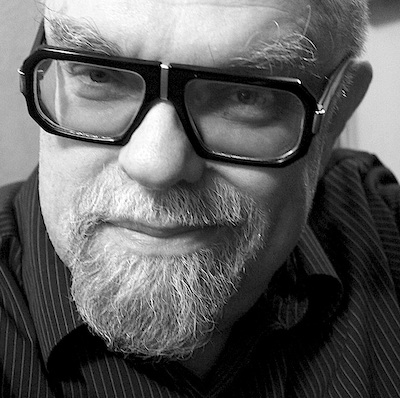
Catherine Lamb
Catherine Lamb (b. 1982, Olympia, WA. U.S.) is an active composer exploring the interaction of tone, summations of shapes and shadows, phenomenological expansions, the architecture of the liminal (states in between outside/inside), and the long introduction form. She began her musical life early, later abandoning the conservatory in 2003 to study Hindustani music in Pune, India. She received her BFA in 2006 under James Tenney and Michael Pisaro at CalArts in Los Angeles, where she first developed her research into the interaction of tone and continued to compose, teach, and collaborate with musicians (such as Laura Steenberge and Julia Holter on Singing by Numbers). In 2008 she received a W. A. Gerbode Foundation and W. & F. Hewlett Foundation Emerging Composers initiative for Dilations, premiered at the Other Minds festival in San Francisco. She mentored under the experimental filmmaker/Dhrupad musician Mani Kaul until his death in 2011. In 2012 she received her MFA in music/sound from the Milton Avery School of Fine Arts at Bard College in New York. She toured Shade/Gradient extensively and was awarded the Henry Cowell Research Fellowship to work with Eliane Radigue in Paris. In 2013 Lamb relocated to Berlin, Germany where she lives currently, and has written for ensembles such as Konzert Minimal, Dedalus, Ensemble neoN, the London Contemporary Orchestra, as well as the JACK Quartet; while collaborating regularly with Marc Sabat, Johnny Chang (Viola Torros), Bryan Eubanks, and Rebecca Lane. Her first orchestral work, Portions Transparent/Opaque, was premiered by the BBC Scottish Symphony Orchestra at the 2014 Tectonics Festival in Glasgow and was conducted by Ilan Volkov. She completed a series of nine pieces entitled Prisma Interius (2016-18) in which the infinite opening filter from inner to outer perceptions are deeply explored. In 2019 she co-founded the collectively oriented Harmonic Space Orchestra in Berlin. She is a 2020 recipient of the Ernst von Siemens Composer’s prize, a 2018 recipient of the Grants to Artists award from the Foundation for Contemporary Arts, a Staubach Fellow for the 2016 Darmstadt Summer course as well as a 2016-2017 Schloss Solitude Fellow. Her writings/recordings are published in KunstMusik, Open Space Magazine, QO2, NEOS, New World Records, Another Timbre, Other Minds, Winds Measure, Hubro Records, Black Pollen Press, Sound American, and Sacred Realism.
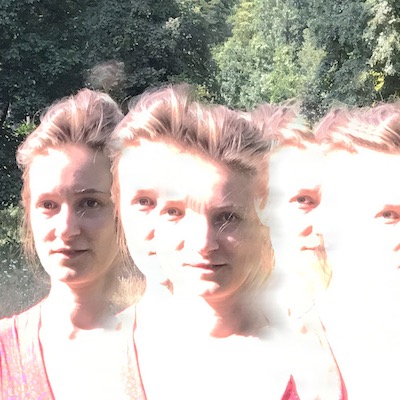
Laetitia Sonami
Laetitia Sonami is a sound artist, performer and researcher.
Sonami’s sound performances, live‐film collaborations and sound installations focus on issues of presence and participation. She has devised new gestural controllers for performance and applies new technologies and appropriated media to achieve an expression of immediacy through sound, place and objects.
Best known for her unique instrument, the elbow-length lady’s glove, which is fitted with an array of sensors tracking the slightest motion of her hand and body, she has performed worldwide and earned substantial international renown.
Recent projects include the design of a new instrument, the Spring Spyre, based on the application of neural networks to real-time audio synthesis; an improvisation duo, Sparrows and Ortolans, with James Fei; and Le Corps Sonore, a fully immersive sound installation on six floors of the Rubin Museum, NYC in collaboration with Eliane Radigue and Bob Bielecki.
Sonami has received numerous awards among which the Herb Alpert Awards in the Arts and the Foundation for Contemporary Performance Awards. She is currently guest faculty at the Center for Contemporary Music, Mills College and guest faculty at the Bard MFA program.
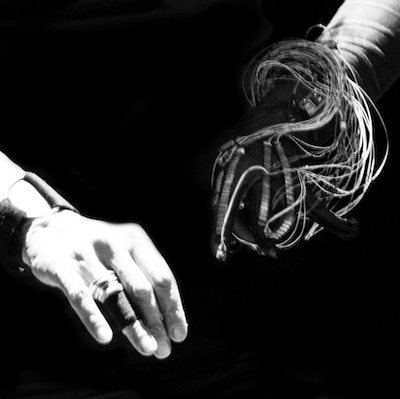
Zachary James Watkins
Zachary James Watkins studied composition with Janice Giteck, Jarrad Powell, Robin Holcomb and Jovino Santos Neto at Cornish College. In 2006, Zachary received an MFA in Electronic Music and Recording Media from Mills College where he studied with Chris Brown, Fred Frith, Alvin Curran and Pauline Oliveros. Zachary has received commissions from Cornish College of The Arts, The Microscores Project, the Beam Foundation, sfsound, The Living Earth Show, Kronos Quartet and the Seattle Chamber Players among others. His 2006 composition Suite for String Quartet was awarded the Paul Merritt Henry Prize for Composition and has subsequently been performed at the Labs 25th Anniversary Celebration, the Labor Sonor Series at Kule in Berlin Germany and in Seattle Wa, as part of the 2nd Annual Town Hall New Music Marathon featuring violist Eyvind Kang. Zachary has performed in numerous festivals across the United States, Mexico and Europe. Zachary releases music on the labels Sige, Cassauna, Confront (UK), The Tapeworm and Touch (UK). Novembre Magazine (DE), ITCH (ZA), Walrus Press and the New York Miniature Ensemble have published his writings and scores. Zachary has been an artist in resident at the Espy Foundation, Djerassi and the Headlands Center for The Arts.
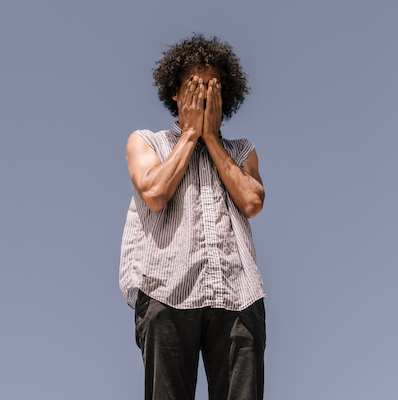
John Bischoff
John Bischoff (b. 1949, San Francisco) is a composer known for his solo constructions in real-time synthesis and the pioneering development of computer network music. He was a founding member of The League of Automatic Music Composers (1978), considered to be the world’s first computer network band. He is also a founding member of The Hub (1987), a network band that continues to expand on the network music form today. Recordings of Bischoff’s work are available on Artifact, 23Five, Tzadik, Lovely, and New World Records. In 1999, he was a recipient of a prestigious $25,000 Artist Grant from the Foundation for Contemporary Arts (NY). As a member of the Hub, he was awarded a GigaHertz Prize for life-time achievement in Electronic Music in 2018 by ZKM in Karlsruhe, Germany. He is Emeritus Professor of Music at Mills College in Oakland, California.
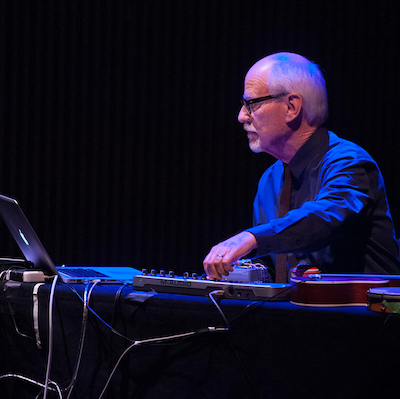
Chris Brown
CHRIS BROWN, composer, pianist, and electronic musician, makes music with self-designed sonic systems that include acoustic and electroacoustic instruments, interactive software, computer networks, microtonal tunings, and improvisation. His compositions are designs for performances in which people bring to life the musical structures embedded in scores, instruments, and machines.
Early pieces featured instruments he invented and built including a prepared electric piano in the orchestral piece Alternating Currents (1983) and a digitally-controlled analog signal processor for the environmental piece for brass, percussion and electronics Lava (1992). Talking Drum (1995-2000), was a MIDI network installation exploring polyrhythm, distance, and resonance in large architectural spaces. He is a founding member of the pioneering computer network band The HUB, which received the 2018 ZKM Giga-Hertz Prize for Electronic Music. Throughout his career he has composed solos for computer and for acoustic instruments with interactive electronics using self-authored software. Since 2005 he writes music in Just Intonation, also integrating rhythmic structures that parallel the proportions used in their tunings.
His music is available on New World, F’oc’sle Music, Tzadik, Pogus, Intakt, Ecstatic Peace, Red Toucan, Leo, and Artifact Recordings. He has recorded music by Henry Cowell, Luc Ferrari, José Maceda, John Zorn, David Rosenboom, Glenn Spearman, and Wadada Leo Smith; recordings as an improvisor include with Pauline Oliveros, Fred Frith, the Rova Saxophone Quartet, William Winant, and Frank Gratkowski; and he produced three albums of music by the Filipino composer and ethnomusicologist José Maceda.
He taught electronic music and composition as Co-Director of the Center for Contemporary Music at Mills College in Oakland, California for 30 years. His articles on live electronic music have appeared in Computer Music Journal, Leonardo Music Journal, and “At A Distance: Precursors to Art and Activism on the Internet” (MIT Press).

Erika Bell
Erika Bell is a Los Angeles-based musician. Their work explores visceral textures through both traditional and experimental sound-making practices. Having quickly developed a distinctive style and approach to composition, Bell has found a niche in the experimental music underground. Recently, they have expanded their approach, embracing songlike structures and creative processes that might be more familiar to a rock band than a traditional composer. The latter style can be heard on their debut full-length Precept (2020) while the former is heard on long-form ensemble works such as “Moving Like Icebergs Against Each Other” and “Sucking Stones.” Their work retains a signature sound as a through line, generally revolving around dissonant harmonies, cyclical loops, drone, and a sculptural approach to sound.
Bell has had works performed in Sweden, U.K., New York and—in Los Angeles—the Walt Disney Hall, Zebulon, The Dog Star Festival, the wulf. Human Resources and more. Bell also performs with their eponymous ensemble, art-punk band Picky Bunches, The Ensemble Whose Name is Uhhhhhmm (formerly known as Lil Jürg Frey), Cali Bellow, and other occasional projects. Erika holds a BFA in music composition from California Institute of the Arts where they studied with Michael Pisaro and Laura Steenberge.

Micaela Tobin
Micaela Tobin is a soprano, sound artist, and teacher based in Los Angeles, CA who specializes in experimental voice and contemporary opera, composing under the moniker “White Boy Scream.” Within this project Micaela dissects her operatic and extended vocal techniques through the use of electronics. She has performed extensively throughout the western United States, most notably as a guest with hip-hop experimentalists clipping. during their 2017 tour in support of The Flaming Lips. Micaela’s most recent full length release, “BAKUNAWA” (Deathbomb Arc) is part sonic ritual, part diasporic storytelling. Of the album, Steve Smith of The New Yorker Magazine asserts that “opera would do well to pay attention.”
As an opera composer, Micaela premiered and earned a five-star review for her first original experimental opera, entitled “Unseal Unseam,” at the world’s largest art festival, the Edinburgh Festival Fringe, in summer 2016; the work was described as “hypnotic” and “paralyzingly beautiful,” by New Classic LA after its U.S. debut in October 2017. Her most recent opera, “Belarion: A Space Opera” which premiered at the American Legion Center in Pasadena, CA in February 2019, is about the magickal practices of JPL founder Jack Parsons. Tobin hopes to perform the opera again at the Mount Wilson Observatory in 2021.
As a performer, Micaela most recently played the principal role of Coyote in the critically acclaimed opera, SWEET LAND (dir. Yuval Sharon & Canuppa Luger; Comp. Raven Chacon & Du Yun). She also performed with The Industry in their groundbreaking opera, “Hopscotch, a mobile opera for 24 cars (dir. Yuval Sharon).” Other major roles include the poet Mina Loy in the opera “Dada Divas” (dir. Jacqueline Bobak) which has toured internationally both in Europe and Mexico; as a principal vocalist in the premiere of Ron Athey and Sean Griffith’s automatic opera, “Gifts the Spirit”; and as a soprano soloist alongside Annette Bening in the play “Medea” at UCLALive.
Micaela is currently a voice teacher on faculty at the California Institute for the Arts and teaches privately out of her home in Los Angeles, CA.
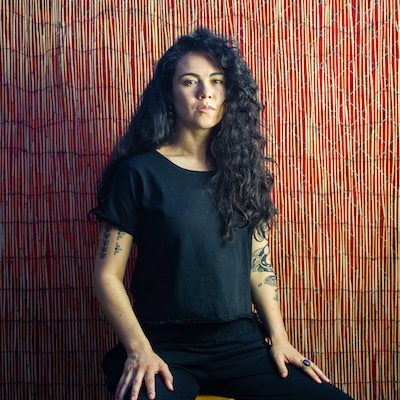
Casey Anderson
Casey Anderson is an artist working with sound in a number of media, including composition, improvisation, electronic music, saxophone, text, and installations. Performances, exhibitions, and residencies include MOCA – Los Angeles (CA), ISSUE Project Room (NY), STEIM (NL), Atlantic Center for the Arts (FL), Mass MOCA (MA), The Walker Art Center (MN), and The Geffen Contemporary at MOCA (CA). He co-founded, and co-edits (with John P. Hastings and Scott Cazan), the Experimental Music Yearbook, and owns and operates a wave press. He currently lives in Los Angeles, California and teaches in the Media Design Practices and Humanities and Sciences departments at ArtCenter College of Design.

Spring 2020
Julia Holter
Julia Holter is a composer, performer, and recording artist based in Los Angeles. Her interest in sonic mysteries has led her to record in various settings–in her home, outside with a field recorder, and in recording studios—as well as to perform live, often with a focus on the voice and the space between language and babble. Holter’s music is multi-layered and texturally rich. She has amassed a body of work that explores melody within free song structures, atmosphere, and the impulses of the voice. She has released five studio albums: Aviary (2018), Have You In My Wilderness (2015), Loud City Song (2013), Ekstasis (2012), and Tragedy (2011). Holter has performed her music at venues and festivals throughout the world with an ensemble of creative musicians. She has written music for the Los Angeles Philharmonic and other ensembles, as well as scores for the films “Never Rarely Sometimes Always” (2020) and “Bleed for This” (2016) and the TV show “Pure” (2019).

Holland Hopson
Holland Hopson is a sound and media artist, composer and improviser. A multi-instrumentalist, he usually performs on clawhammer banjo and electronics. Holland often augments his instruments with custom-designed sensor interfaces and performs with his own highly responsive, interactive computer programs. Holland has performed in Australia, Europe and North America along with notable experimental and outsider musicians such Macarthur Genius Award winners Anthony Braxton and George Lewis, live electronics pioneer David Behrman, sonic meditator Pauline Oliveros, mutant-trumpeter Ben Neill, network music trailblazer Tim Perkis, free-improv innovators LaDonna Smith and Davey Williams, and others. Holland has held residencies at the Atlantic Center for the Arts, Florida; at LEMURPlex, Brooklyn; and Harvestworks Digital Media Arts, New York. Holland is Assistant Professor of Arts Entrepreneurship in New College at the University of Alabama and a Fellow of the Collaborative Arts Research Initiative (CARI).
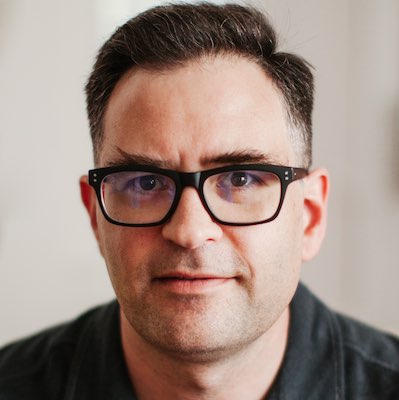
Michelle Lou
Michelle Lou is a composer, performer, and sound artist that works mainly in the realm of electro-acoustic music. Her work has been presented at Wien Modern, Donaueschinger Musiktage, Darmstadt Ferienkurse, Bludenzer Tage zeitgemäßer Musik, The Festival of New American Music, the MATA Festival in New York City, The 66th American Music Festival at the National Gallery in Washington D.C., The Rainy Days Festival in Luxembourg, Ultima Festival in Oslo, Chance and Circumstance in Brooklyn, amongst others. She received degrees in double bass performance and composition from UC San Diego and Stanford University. She was a Radcliffe Fellow at Harvard University and an Elliott Carter Rome Prize Fellow at the American Academy in Rome. She has taught composition and electronic music at Dartmouth College, the WasteLAnd Summer Composition Course, the Academy for New Music Künstlerhaus Boswil, Switzerland, and is currently teaching at the University of California, Santa Cruz.
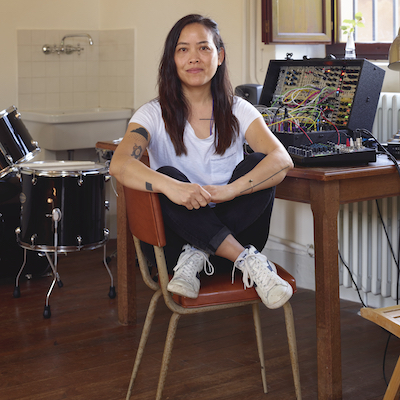
Vic Rawlings
Vic Rawlings employs a still and unstable sound language that traverses from visceral excess to extreme austerity. He has designed and built two separate instruments to realize this aesthetic, including extensive and invasive cello preparations, some directly based on obscure baroque instrumentation. The amplified cello is used as a resonant wooden microphone. He also continually develops an electronic instrument from the exposed circuit boards of sound processors, effectively producing an analog synthesizer with a highly unstable interface. This electronic instrument is realized by a flexible array of exposed speaker elements, chosen for their often unpredictable and idiosyncratic acoustic qualities. His solo performances deny conventional assumptions about the use of time and refuse alliance with dominant trends in improvised music.
Longtime active collaborations include Laurence Cook Disaster Unit (Laurence Cook, Jason Lescalleet, Greg Kelley), undr quartet (Greg Kelley, Liz Tonne, James Coleman), and the BSC (improvising octet led by Bhob Rainey), as well as duos and trios with Michael Bullock, Mazen Kerbaj, Tim Feeney, Tatsuya Nakatani, Ricardo Arias, Bryan Eubanks, Chris Cogburn, Jaime Fennelly and many others. He has performed with a diverse group of major figures of improvised music including Ikue Mori, Eddie Prevost, Jaap Blonk, Daniel Carter, Donald Miller, and Andrea Neumann, among many others. He has also performed the works of Christian Wolff (with the composer), Karlheinz Stockhausen, John Cage, and Cornelius Cardew.
Vic has toured internationally and appeared at the following festivals: Victoriaville International Festival of Improvised Music (Victoriaville, Quebec), Vision Festival (NYC), Improvised and Otherwise Festival (NYC), Festival of New Trumpet Music (NYC), Boston Cyberarts Festival, Seattle Improvised Music Festival, No Idea Festival (Austin, TX), Fringe Festival (Charleston, SC), High Zero Festival of Improvised Music (Baltimore, MD), Autumn Uprising Festival (Boston, MA), and the Musique Action Festival in Nancy, France.
Rawlings appears on an international sampling of record labels, including Grob, RRR, Sedimental, Absurd, Emanem, Boxmedia, Audio Dispatch, H+H, Chloe and Rykodisc, among others.
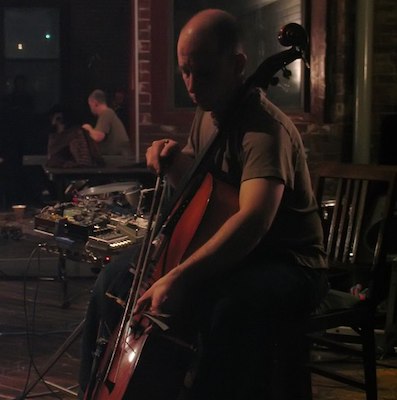
Jane Cassidy
Jane Cassidy is a multi-disciplinary artist and educator from Galway, Ireland. Trained in music and visual art, Jane earned a Masters in Music and Media Technologies from Trinity College Dublin in 2008 and an MFA in Digital Art from Tulane University in New Orleans in 2014. Jane’s main interests lie in audio-visual immersive environments, visual music, live VJing and multi-channel work. Cassidy has had solo shows at the Mobile Museum of Art, the Montgomery Museum of Fine Arts, the University of New Orleans, and the Ann Arbor Film Festival. Exhibitions include the European Media Art Festival, Germany, the New Orleans Film Festival, Punto Y Raya Festival, Spain, Galway International Arts Festival, Currents New Media Festival, New Mexico, live visuals for Animal Collective in New Orleans, as well as group shows internationally. Currently she is the Assistant Professor of Digital Media at Boston College in Massachusetts.
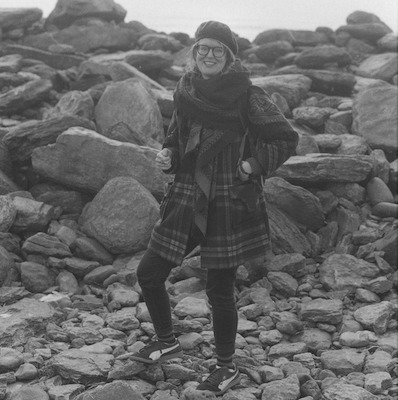
Aaron Drake
Aaron Drake classically trained as a pianist from age 5 and competitively performed between ages 8 and 15 throughout the West Coast (US and Canada). Drake studied composition and Complexist Music at San Francisco State University under Josh Levine and Ron Caltabiano. He earned his first public commission from the West Coast Ensemble at 19. Drake completed his undergraduate degree at the Hochschule für Musik in Trossingen with advanced compositional studies under Frank Cox and Mark Randall-Osborne at Schloss Solitude in Stuttgart.
Aaron returned to the states and studied at CalArts with James Tenney (microtonal music), Mark Trayle, David Rosenboom and Michael Pisaro. The studies at CalArts pushed him to conceptualize music beyond the intricacies of advanced music theory which lead to his first film collaborations.
The score to his first film, “The Shadow Effect,” won a Bronze Medal at Park City Music Festival and since then he’s scored multiple narrative and documentary features, music for Emmy Award winning TV shows like How I Met Your Mother, Live In Front of a Studio Audience and Henry Ford’s Innovation Nation, numbers of advertisements (Nintendo, Nike, Garnier, EA Sports, Gillette etc.), while continuing to write experimental music for live performance and dance. His work has been performed or displayed at many national and international venues such as ICA, ZKM, LACMA, MOCA, REDCAT, OCMA, the Getty Villa and the Hammer Museum.
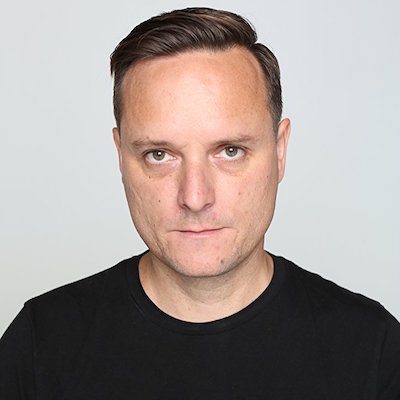
Fall 2017
Akio Suzuki and Aki Onda
Though they differ in generation and performance practice, the NYC-based Aki Onda (b. 1967) and the Kyotango-based Akio Suzuki (b. 1941) share an astonishingly inventive, open-ended, and spontaneous approach to the infinite and variegated possibilities of sound. Since initiating a collaborative relationship in 2005, the duo have embarked on a number of tours in Europe and Asia, exploring site-specific locations ranging from an abandoned factory on the outskirts of Brussels to an underground parking lot in Glasgow. Suzuki and Onda released their first album “ma ta ta bi” on ORAL_records in 2014. This year, they were invited to perform at documenta 14 in Athens.
Since the 1960s, sound art pioneer Akio Suzuki has been investigating the acoustic quality of selected locations and creating corresponding topographies. His intensive involvement with the phenomena of pulse and echo led him to develop his own instruments in the 1970s. Starting from the 90s, his soundwalk project, oto-date, which means, respectively, “sound” and “point” in Japanese, finds listening points in the city, and playfully invites the audience to stop and listen carefully at given points on the map.
Aki Onda is a New York-based artist and composer. He is particularly known for his “Cassette Memories” — works compiled from a “sound diary” of field-recordings collected by using the cassette Walkman over a span of last quarter-century. He creates compositions, performances, and visual artworks from those sound memories.
Monday, October 23rd, 2-4pm – Japanese sound artists Akio Suzuki and Aki Onda will present a workshop to ESP and composition students with the artists demonstrating and discussing principles of site-specific performance.
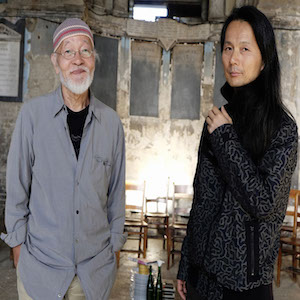
Davy Sumner
Davy Sumner is an installation artist, experimental musician, percussionist, and maker in Los Angeles.
His creative works are spawned out of noise, physics, biology, and society, often utilizing sound spatialization, feedback-based systems, auditory illusions, chaos, and original electronics as key elements. He specializes in imagining and fabricating custom technologies and homemade devices that become animated, unstable, and unpredictable when introduced to the physical world.
Recent projects include “TINES” at Grand Central Art Center, “Eddy Currents,” a mechatronic percussion instrument with associated water vortices, and the” 4kOrgan”—an instrument comprised of magnetically vibrated tuning forks. Davy is a 2017-18 Artist In Residence at Side Street Projects in Pasadena.
Davy has installed work and performed at Grand Central Art Center, Long Beach City College, REDCAT, Coaxial Arts, The Cedar Cultural Center, The Lynden Sculpture Garden, and The Eaux Claires Music and Arts Festival. A fierce and diverse collaborator, he has worked in live and studio settings with Justin Vernon (on Bon Iver’s Grammy-nominated 2016 LP ”22, A Million”), Sean Carey (S. Carey, Aero Flynn), and Rob Moose (yMusic, Ben Folds).
Monday, October 2nd, 2-4pm in B304 – Davy will talk about his current work and life in LA for recent ESP graduates
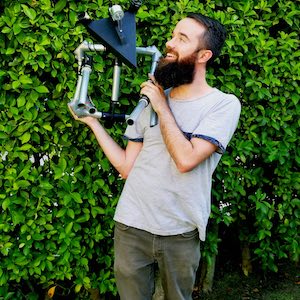
Spring 2017
Laura Steenberge
I am a performer, composer and researcher studying connections of sound and language. I create intermedia and site-specific performances and lecture demonstrations, write traditional songs and compose art music that usually involves the voice in one way or another. As a performer, I’m a jack-of-all-trades type: I sing and talk and play contrabass, viola da gamba, piano, guitar, harmonica, as well as a number of simple invented instruments.
Past work as a psycholinguistics researcher studying nonsense language influences my creative work. My current research investigates how language and nonsense define the boundaries of knowledge. From a rational perspective, the failure of language defines the limits of knowledge. From a metaphysical perspective, the failure of language is a requirement of mystical experience. Ultimately, I want to understand what it means to believe, which I study by looking at connections between science and mythology from the dawn of civilization to the present day.
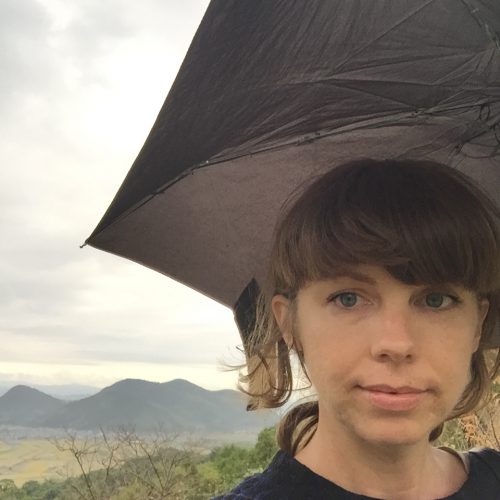
Fall 2016
Cooper Baker
Cooper Baker is a sound artist living in San Diego, California. He regularly plays experimental music at venues along the west coast and his artwork has been exhibited in galleries and publications throughout the United States and abroad. In addition to his own creative output, he provides other artists and companies with custom software and electronics as a creative technical consultant. Originally from Los Angeles, he moved to San Diego to attend the University of California San Diego where he earned his Ph.D. while studying with Miller Puckette, Tom Erbe, and F. Richard Moore. Prior to enrollment at UCSD he was a music faculty member at California Institute of the Arts where he also received his MFA in experimental composition and finished his BFA in music technology. While at CalArts he refined his artistic practice and began incorporating new and experimental electronic media in his artwork and music production, under the guidance of Morton Subotnick, Mark Trayle, and Barry Schrader.
Monday, November 7th, 2-4pm in B304 – Cooper will talk about his current work in the ESP Forum
Tuesday, November 8th, 4-7:30pm in B305B – Cooper will give part one of a workshop on Pure Data
Wednesday, November 9th, 4-7:30pm in B305B – Cooper will give part two of a workshop on Pure Data
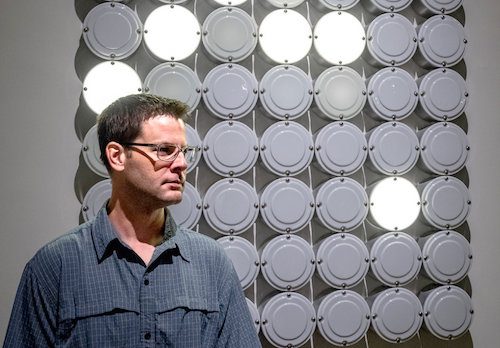
Bryan Jacobs
Composer, performer, and sound artist, Bryan Jacobs’ work focuses on interactions between live performers, mechanical instruments and computers. His pieces are often theatrical in nature, pitting blabber-mouthed fanciful showoffs against timid reluctants. The sounds are playfully organized and many times mimic patterns found in human dialogue. Hand-build electromechanical instruments controlled by microcontrollers bridg e acoustic and electroacoutic sound worlds. These instruments live dual lives as time-based concert works and non-time-based gallery works.
His music has been performed by ensembles such as the Cleveland Chamber Symphony, Wet Ink, International Contemporary Ensemble, Talea Ensemble, Ensemble Pamplemousse, and defunensemble. His music has been featured at many music festivals in Europe and the US. He is a 2017 Guggenheim Fellow. He has performed his own compositions for guitar and electronics at the Stone (NYC), Miller Theater (NYC), and the Wulf (LA). In addition to his artistic endeavors, Bryan is the co-founder of Qubit, a New York based new music initiative that presents mostly emerging artists whose work involves creative uses of technology.
Monday, December 4th, 2-4pm in B304 – Bryan will talk about his current work in the ESP Forum
Tuesday, December 5th, 10am-5pm in B305B – Bryan will be offering individual lessons to students

Spring 2016
Colin Wambsgans
Colin Wambsgans composes music for electronics and assorted ensembles. His work explores the interactions of memory, timbres, and spaces; and he often uses field recordings as a basis for composition. He has presented work at the Darmstadt Ferienkurse Atelier Elektronik under Francisco López, the Getty Center, the Hammer Museum, Music @ Boston Court, the wulf., ex mus (Dallas), Austin New Music Society, and his compositions have been presented by the ensembles wildUp and gnarwhallaby. Also, he has been in residence at the Millay Colony for the Arts. For the theater, Wambsgans’s sound designs and compositions were part of productions at LaMama and Red Fern in New York; Center Repertory in Walnut Creek, CA; and several theaters throughout Los Angeles, most notably with Chalk Rep and Rogue Machine. His commercial work includes composition and sound design for interactive iPad apps, NPR segments, and podcasts (most recently for the NPR podcast Embedded). A New Orleans native, Wambsgans earned an MFA at CalArts, studying with Michael Pisaro, Sara Roberts, and Wolfgang von Schweinitz. He lives in Los Angeles with his wife, Dorothy Fortenberry, and their daughters.
Tuesday, April 29th, 2-4pm in B304 – Colin will give a talk about his sound work in the Field Recording Workshop

Seth Cluett
Seth Cluett (b. Troy, NY) is an composer, performer, and artist whose work ranges from photography and drawing to video, sound installation, concert music, and critical writing. His “subtle…seductive, immersive” (Artforum) work has been characterized as “rigorously focused and full of detail” (e/i) and “dramatic, powerful, and at one with nature” (The Wire). Exploring the territory between the senses, Cluett’s works are marked by a detailed attention to perception and to the role of sound in the creation of a sense of place, the workings of memory, and the experience of time. His research interests and critical writings investigate embodied experience, immersive multi-media systems, the media history of the loudspeaker, the history and documentation of sound as an expressive medium, and architectural acoustics as compositional material.
His work has been presented internationally at institutions and festivals such as Kill Your Timid Notion at Dundee Contemporary Arts in Scotland; the 10th Rencontres Internationales, Palais de Tokyo, Main d’Oeuvres, and GRM in Paris; Hebbel am Ufer Theater and Staalplaat in Berlin; the Osage Art Foundation/October Contemporary in Hong Kong; The Kitchen, The MATA Festival, Issue Project Room, Roulette, Experimental Intermedia, Audio Visual Arts, and Diapason Gallery in New York; the Institute for Contemporary Art, Non-Event, and Mobius Artist Space in Boston; the Betty Rymer, Heaven, Artemisia, and Deadtech Galleries in Chicago; as well as Swarm Gallery in Oakland, CA and the Deep Listening Space in Kingston, NY. He has created dance and theater works with DD Dorvillier/Human Future Dance Corp, Helene Lesterin/Atlas Dance, and Jen Mesch.
Monday, April 11th, 2-4pm in B305b – Seth will give a talk about his sound work in the ESP Forum

Fall 2015
Tom Erbe
Tom Erbe has had an important role in American experimental and electronic music of the last 20 years. In addition to his pioneering and widely used program SoundHack, he has become one of the most sought after and respected sound engineers for contemporary music.
He studied computer science and music at the University of Illinois, Urbana-Champaign, and got his initial audio engineering experiences by volunteering at WEFT, WPGU, and Faithful Sound Studios.
After graduating Tom became the Technical Manager of the Computer Audio Research Laboratory at the University of California, San Diego. There he was involved in the development of an electronic violin, a DSP based sound processor and an early computer music production workstation.
In 1987 Tom became the Technical Director of the Center for Contemporary Music at Mills College. At CCM he worked with composers Robert Ashley, David Rosenboom, Larry Polansky, James Tenney and Alvin Curran, as computer music and recording engineer. His research work at CCM included the program SoundHack, and the design of a DSP based sound processor for use with the language HMSL. During this time he also developed a 4-channel spatial audio processor for the NASA Ames Research Center.
In 1993 Tom joined the faculty of the California Institute of the Arts as Technical Director of the computer music studios. Here he continued his work with SoundHack and spectral techniques, teaching courses in computer music, programming and audio engineering. Tom also directed the design and construction of CalArts’ Dizzy Gillespie Recording Studios.
In 2004 he rejoined the faculty of UC San Diego in the Department of Music and serves as Studio Director. Most recently Tom has released SoundHack Spectral Shapers, the first of a planned set of three plugin bundles to bring extreme spectral processing to the VST, AU and RTAS formats.
Monday, November 30th, 2-4pm in B305B – Tom will give a talk about his latest Soundhack synthesizer modules
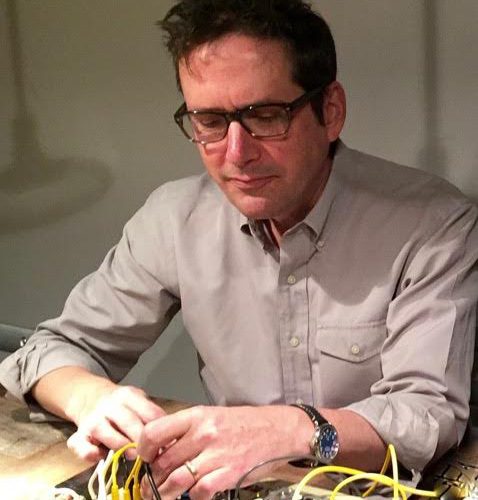
Spring 2015
Graham Lambkin
Lambkin first entered the public consciousness at 19 when he formed his band The Shadow Ring, in Folkestone, a small town in Kent, England. The band was memorable and built an rabidly passionate fan base because of its sui generis approach, blending elements of folk, noise, cracked electronics, and surrealist poetry, while radically changing the overall formula with each release. A decade of increasingly skewed and inspired work culminated in 2003’s I’m Some Songs, constructed long distance as Lambkin had relocated to the US in 1998. Over the last few years, Lambkin has primarily worked under his own name, most notably with 2007’s brilliant Salmon Run, a precursor to The Breadwinner.
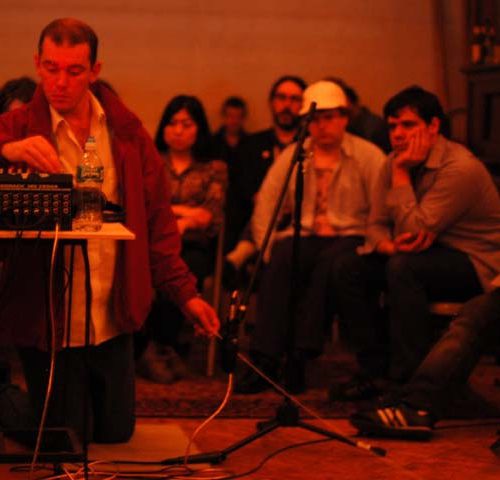
Peter Blasser
Peter Blasser, tubist since 4th grade. In high school, unallowed to purchase ethnic instruments, he began making them in the basement out of wood. Later, in college, he discovered electronic circuits, and their possibilities for infinite tunings, infinite timbres. He made a career out of electronic modulations, and making these intangibles touchable through nodes, case flexure, and radio fields. His company: ciat-lonbarde.net, sells these devices to musician around the world. He teaches the design of electronic instruments to his interns, as well as in workshops for larger groups. Some paper circuits can be downloaded from his website, printed out, and assembled to yield sound objects. The cybernetic interface uses the subtleties of touch, through discrete components, often “woven” together geometrically, to simulate intuitive patterns and chaotic sophistication. His designs are spurred into existence to explore platonic or philosophical concepts, which then acquire a narrative as they are refined into essential analog synthesizers.
